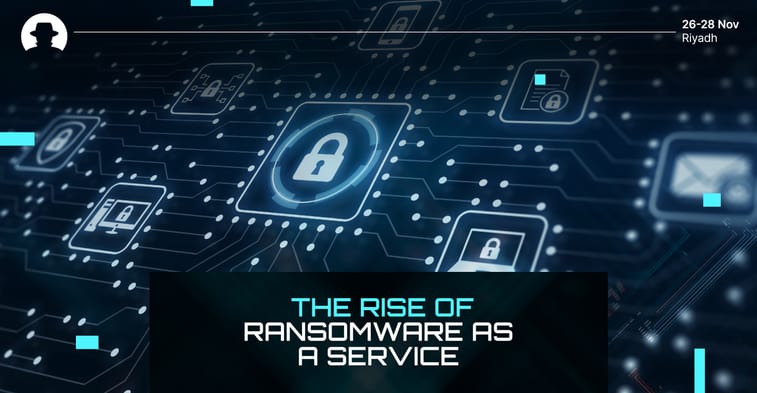Ransomware has become one of the most pervasive and destructive cyber threats, crippling businesses, governments, and individuals alike. The rise of Ransomware-as-a-Service (RaaS) has exacerbated the problem, making it easier for cybercriminals—regardless of their technical expertise—to launch ransomware attacks. In this post, we’ll explore what RaaS is, how it works, and the implications it has for the cybersecurity landscape.

What is Ransomware-as-a-Service (RaaS)?
Ransomware-as-a-Service is a business model used by cybercriminals where developers create and sell or lease ransomware tools to other criminals, known as “affiliates.” These affiliates can then use the ransomware to launch attacks, with a portion of the ransom paid to the developers as a form of commission.
Much like legitimate software-as-a-service (SaaS) models, RaaS lowers the barrier to entry for launching ransomware campaigns. It allows even individuals with limited technical knowledge to carry out highly sophisticated cyberattacks, contributing to the exponential rise of ransomware incidents globally.
How Does RaaS Work?
Development of Ransomware: Skilled cybercriminals develop the ransomware software, which includes encryption algorithms designed to lock down a victim’s data. These developers offer their ransomware on the dark web, along with support services and dashboards for managing attacks.
Affiliate Recruitment: Developers recruit affiliates, who are often individuals or groups looking to profit from ransomware without the technical skills to create it themselves. The RaaS developers usually advertise their services in hacker forums and marketplaces, targeting those interested in becoming ransomware operators.
Launch of Attacks: The affiliates launch the ransomware attacks, typically through phishing emails, malicious downloads, or exploit kits that take advantage of vulnerabilities in software. Once the victim’s files are encrypted, the ransomware displays a message demanding payment in cryptocurrency to decrypt the files.
Profit Sharing: When the ransom is paid, the proceeds are split between the affiliate and the RaaS developers, with the developers taking a percentage cut, usually between 20-30%.
Why is RaaS So Dangerous?
Ease of Use: RaaS allows anyone with basic knowledge to launch ransomware attacks, leading to a surge in ransomware incidents globally. This democratization of cybercrime means that attacks are becoming more frequent and widespread.
Target Expansion: Because RaaS is accessible to non-technical users, it increases the number of ransomware operators, leading to more attacks targeting organizations of all sizes across different sectors, from healthcare and education to finance and government.
Innovation and Adaptability: RaaS developers are constantly improving their ransomware tools, adding new features to bypass security measures, making it harder for organizations to protect themselves. Ransomware can now evade detection and encryption recovery tools, making it more dangerous than ever before.
Notable RaaS Examples
REvil: One of the most infamous RaaS groups, REvil, has targeted several high-profile companies, demanding multimillion-dollar ransoms. They became notorious for their sophisticated encryption techniques and aggressive tactics, including double extortion, where they threaten to leak stolen data if the ransom isn’t paid.
DarkSide: DarkSide gained notoriety after their attack on Colonial Pipeline, one of the largest pipeline operators in the United States. This attack led to significant disruptions in fuel supply, highlighting the devastating impact that RaaS can have on critical infrastructure.
LockBit: LockBit is another prominent RaaS operation that focuses on automating the attack process, making it easier for affiliates to execute successful ransomware campaigns. The group offers extensive support services to affiliates, including tools for exfiltrating data and generating ransom notes.
How to Protect Against RaaS Attacks
Employee Training and Awareness: Phishing remains one of the most common vectors for ransomware attacks. Training employees to recognize phishing emails and avoid clicking on suspicious links can significantly reduce the likelihood of a successful attack.
Regular Backups: Backing up critical data regularly is essential for minimizing the damage caused by ransomware. Ensure that backups are stored offline or in a separate network to prevent them from being encrypted during an attack.
Patch Management: Keeping software up to date is crucial for preventing ransomware attacks that exploit known vulnerabilities. Implement a robust patch management strategy to ensure that all systems are protected with the latest security patches.
Endpoint Security: Use advanced endpoint detection and response (EDR) tools to monitor and protect against ransomware infections. EDR solutions can detect suspicious behavior and respond in real time to mitigate attacks.
Network Segmentation: By segmenting your network, you can prevent ransomware from spreading across your entire infrastructure. If one part of the network is compromised, segmentation will help contain the attack and limit its damage.
Conclusion
Ransomware-as-a-Service is a growing threat in the cybersecurity landscape, with increasingly sophisticated attacks targeting organizations of all sizes. As RaaS continues to evolve, it’s crucial for businesses to strengthen their defenses by implementing proactive security measures. From employee education and regular backups to patch management and endpoint security, staying vigilant and prepared is the best defense against the devastating impact of ransomware.
Organizations need to treat ransomware as an ever-present threat, and investing in the right tools and practices is key to staying ahead of this dangerous trend.